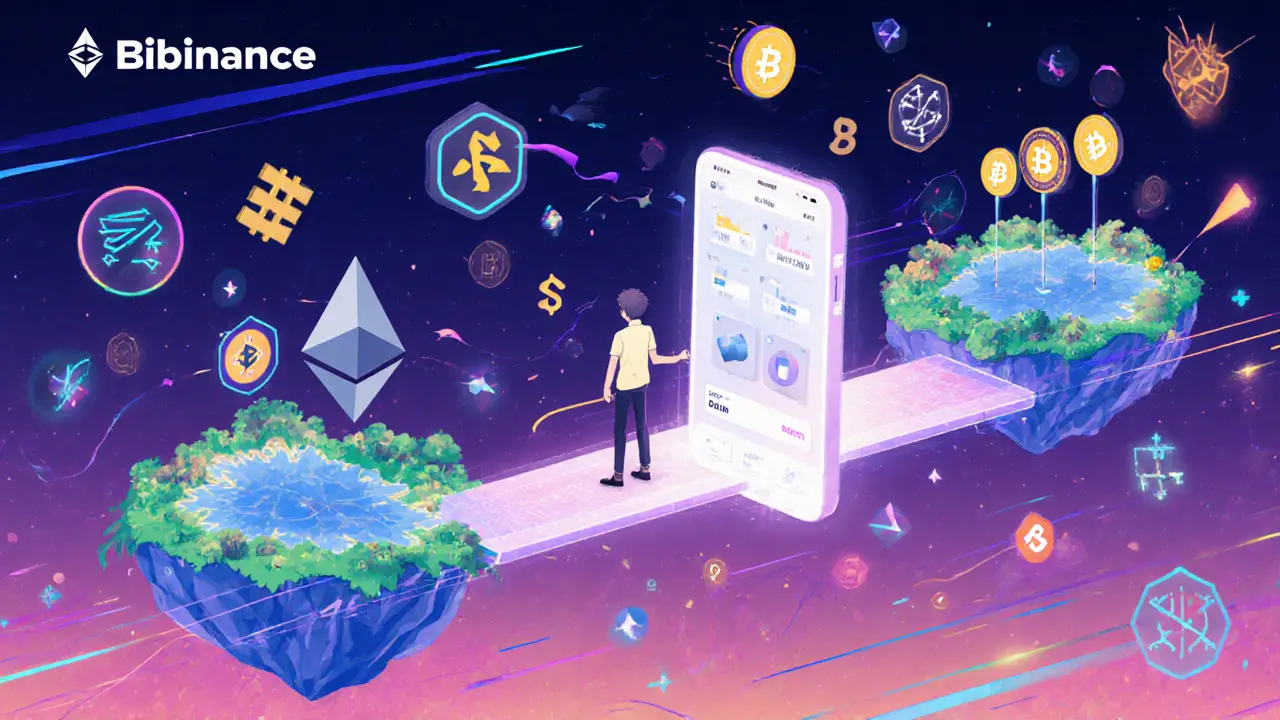DApp Gas Fee Calculator
Transaction Type
Network Selection
Estimated Costs
Total Cost
$0.00
$0.00
Costs include gas fees and network-specific transaction costs. Actual fees may vary based on network congestion.
Why This Matters
As discussed in the article, gas fees remain a critical user experience barrier for DApps. Layer 2 solutions like Polygon, zkSync, and Arbitrum offer transaction costs under $0.01, making decentralized applications accessible for real-world use cases in finance, healthcare, and logistics. This calculator demonstrates how modular blockchain architectures and cross-chain interoperability are solving the scalability challenges that once limited mainstream adoption.
By 2025, decentralized applications-DApps-are no longer just experimental tools for crypto enthusiasts. They’re becoming the backbone of real-world systems in finance, healthcare, logistics, and even smart homes. Unlike traditional apps that run on company-controlled servers, DApps operate on blockchain networks, making them resistant to shutdowns, censorship, and single points of failure. This isn’t science fiction anymore. It’s happening right now, and the changes are accelerating.
Modular Blockchains Are Rewriting the Rules
The old model of building DApps on a single blockchain like Ethereum is fading. Why? Because one-size-fits-all blockchains can’t handle everything efficiently. Too many transactions slow things down. Too much data bloats the network. That’s why modular blockchains are taking over.Instead of forcing consensus, execution, and data storage to happen on the same layer, modern systems split them up. Think of it like building a car with separate engines, wheels, and chassis-you can upgrade each part independently. Celestia, launched in late 2023, is the first network designed just for data availability. It doesn’t process transactions. It just makes sure data is stored securely and available to others. Meanwhile, Polygon 2.0 combines zero-knowledge proofs with multi-chain coordination to let DApps run faster and cheaper.
This shift means startups no longer need to build their own blockchain from scratch. With EigenLayer, developers can reuse Ethereum’s security by re-staking ETH to protect new execution layers. It cuts development time by months and slashes costs. Now, a team can launch a privacy-focused DApp for healthcare or a high-speed DApp for gaming without reinventing the wheel.
Cross-Chain Interoperability Is No Longer Optional
Remember when you had to choose between Uniswap on Ethereum or PancakeSwap on Binance Smart Chain? You picked one network and stuck with it. That’s over.Today’s DApps talk across chains. A user can swap tokens on one blockchain, use the result to buy an NFT on another, and then stake it in a liquidity pool on a third-all without leaving the app. This is cross-chain interoperability in action. It’s not just about convenience. It’s about freedom. Users aren’t locked into one ecosystem anymore.
Projects like LayerZero and Chainlink CCIP are making this seamless. They act as bridges that verify data across networks without trusting a single middleman. The result? More liquidity, better prices, and fewer bottlenecks. Decentralized exchanges (DEXs) are already seeing 40% of their volume come from cross-chain trades. By 2026, that number could hit 70%.
Smart Contracts Are Getting Smarter-and Safer
Smart contracts are the code that runs DApps. In the early days, they were simple: if X happens, do Y. Now, they’re doing far more.Multi-signature wallets require three out of five team members to approve a transaction before funds move. That’s how DAOs prevent rogue actors from draining treasuries. Zero-knowledge proofs (ZKPs) let you prove you’re eligible for a loan or that your medical records are valid without showing the actual data. This keeps sensitive information private while still meeting regulations like HIPAA in healthcare or GDPR in Europe.
Bug bounty programs are now standard. Instead of waiting for hackers to break in, DApp teams pay ethical hackers to find flaws first. In 2024, over $120 million was paid out in bounties across major DApp platforms. That’s not just a security measure-it’s a signal that the industry is growing up.

DeFi Is Moving Beyond Trading
Decentralized Finance (DeFi) used to mean swapping tokens and earning yield. Now, it’s about building financial infrastructure for the real world.Imagine a farmer in Kenya using a DApp to get a loan based on satellite data showing crop health. Or a musician in Mexico selling song rights as NFTs and automatically splitting royalties with collaborators through a smart contract. These aren’t hypotheticals. They’re live.
The DeFi market is projected to hit $231 billion by 2030. But the real growth isn’t in trading volume-it’s in use cases. Automated market makers (AMMs) now power everything from insurance pools to pension funds. Governance tokens let users vote on changes to protocols, turning passive holders into active participants.
And regulators are starting to catch up. Clearer rules in the U.S. and EU are reducing uncertainty. More banks are exploring blockchain-based settlements. Even central banks are testing digital currencies-15 are expected to launch CBDCs by 2030. This isn’t a threat to DeFi. It’s validation.
DApps Are Entering Real-World Industries
The biggest shift? DApps are no longer confined to crypto wallets. They’re in supply chains, hospitals, and power grids.Logistics firms are using DApps with IoT sensors to track shipments in real time. If a refrigerated truck’s temperature rises above 4°C, the system automatically flags it, notifies the carrier, and triggers compensation to the buyer-all without human intervention. That’s not just efficiency. It’s trust built into the system.
In healthcare, patient data is stored on-chain with zero-knowledge proofs. Doctors get access only when needed. Patients control who sees what. No more leaking records to third-party insurers. No more centralized databases hacked for millions of records.
Even energy grids are getting decentralized. In Texas and Germany, households with solar panels are selling excess power directly to neighbors via DApps. No utility company in between. No middlemen. Just peer-to-peer transactions settled in seconds.

The Rise of MetaFi and the Metaverse Economy
The next frontier? MetaFi-merging DeFi with the Metaverse. It’s where gaming, art, music, and social media become financial ecosystems.Players in games like Axie Infinity already earn tokens by playing. But now, those tokens can be used as collateral for loans, staked for passive income, or traded on DEXs. Artists sell albums as NFTs and earn royalties every time someone resells them. Fans buy shares in a musician’s future revenue stream. It’s not speculation-it’s ownership.
Younger generations are driving this. A 2025 survey found that 68% of Gen Z users have invested in a digital asset tied to a game, song, or virtual item. They don’t see it as gambling. They see it as building something that belongs to them.
DAOs are managing these economies. Instead of a company deciding what features get added to a game, the community votes. Instead of a label controlling who gets royalties, smart contracts do it automatically. This isn’t the future. It’s already here.
What’s Holding DApps Back?
Let’s be honest: DApps aren’t perfect. They’re still hard to use for most people. Wallets are confusing. Gas fees can spike. Recovery phrases are a nightmare if you lose them.That’s why user experience is the next battleground. Companies are building wallet interfaces that feel like Apple or Google apps-simple, fast, secure. Social recovery lets you regain access using trusted friends or family, not a 12-word phrase. On-chain identity systems are emerging so you don’t need a new wallet for every app.
Scalability is improving too. Layer 2 solutions like zkSync and Arbitrum now handle millions of transactions daily with fees under a penny. That’s faster and cheaper than Visa in many cases.
The real challenge isn’t technology. It’s adoption. People don’t care about blockchain. They care about getting paid faster, paying less in fees, and owning their data. DApps need to stop talking about decentralization and start solving real problems.
What to Expect by 2027
By 2027, DApps won’t be labeled as “blockchain apps.” They’ll just be apps. You won’t know you’re using one unless you look under the hood.Every major tech company will have a DApp division. Every bank will offer crypto-based savings accounts. Every smartphone will come with a built-in wallet. The blockchain will be invisible, like electricity-running everything, noticed only when it fails.
And the winners? Not the biggest companies. The most agile teams. The ones who build for real people, not just crypto traders. The ones who solve problems, not hype.
The future of DApps isn’t about bigger blockchains. It’s about better experiences. Smarter contracts. More access. Less friction. That’s what matters now.


Post Comments (3)